You can contact LEARNZ, part of CORE Education, at:
Postal Address:
PO Box 13 678,
Christchurch 8141,
New Zealand
Kia ora koutou,
Forestry has always been important to New Zealand with people relying on timber for everything from shelter to building boats and furniture. Māori used native timber to not only build whare but also waka. Native trees grow very slowly so to meet the demand for wood pine trees have been planted in many areas throughout the country. Today you will see how the humble pine tree can be turned into a super strong wood that can be used instead of steel.
A time for pine
Before following the journey of wood from the forest to a building you met with Jason Guiver from Nelson Pine Industries. Jason has been working with timber for many years and has seen a lot of changes in the forestry industry. Jason introduced you to Blair who also works in forestry and together they answered questions from Tauranga Intermediate School during the web conference. Students were interested in why pine trees were grown instead of native trees and Jason explained that pine trees grow much more quickly than native trees and the wood can be used for lots of different things. Native forests are also home to many unique animals and are protected. You can find out more by listening to the web conference.
From seed to tree
Following the web conference Blair took you out to where forestry begins. He showed you how pine tree seedlings are grown. It takes about ten to twelve months to grow pine trees from seeds in a nursery to a size where they can be planted out in a forest. You saw an area where a million seedlings were growing and almost ready to be planted out. Trees are grown both from seeds and cuttings and only the best trees are chosen. It will take another 25 to 30 years before these trees are harvested.
Creating the perfect pine forest
Blair took you to an area where trees were being logged. It was incredible watching the big machinery making short work of cutting trees down and removing branches. Technology has helped forestry to become much safer and easier with some machines being remote controlled. Often pine forests are grown in steep hill country and this is because this land isn’t suitable for farmland or growing crops. To grow the best trees a lot of work is needed to prune trees and keep them free of diseases. This means the trees must be checked regularly. Nelson Pine uses the best trees to make a new product called Laminated Veneer Lumber or LVL. A bit of kiwi ingenuity and a lot of research has led to the development of this engineered wood. Logs are peeled and layers of wood are glued together to create a super strong wood that can be used as beams in buildings instead of steel. You can find out more by watching the videos.
More than just timber
To see how LVL is made you headed back to the Nelson Pine LVL plant. Jason showed you around the huge factory. You could see where logs were placed into 80 degree Celsius baths of water where they soak for 24 hours. After this hot bath, the logs are gathered up and sent along a conveyor belt into the plant where they are peeled. It was amazing to see how precisely a log can be peeled to create a long sheet of 3.7mm thick wood or veneer. You could see the warm veneer steaming and the smell of pine filled the air. Layers of veneer are screened and sorted according to their strength and then these layers are dried before a thin coat of glue is applied and layers are sandwiched together using heat and pressure. You can see the process in the video. Any wood that is left over or isn't strong enough to use for LVL is turned into other products or used as a fuel so there is no waste. The final product is strong, light and durable. LVL has been used in some well-known buildings such as the Waitomo Caves Visitor Centre and looks fantastic. It's great to see a natural product replacing the likes of concrete and steel.
Exporting LVL
LVL is used locally and overseas and from Nelson it can be shipped to destinations throughout the world. You met Paul from Nelson Port who showed you where LVL and other wood products are packed into containers and loaded on to large ships every two weeks. Paul explained how checks must be completed to ensure no unwanted organisms end up in the shipping containers and strict biosecurity procedures have to be followed to protect the LVL.
It has been a busy week exploring three very different industries. It has been interesting to see how these industries have all managed to create amazing natural products through innovation and research. It has been inspiring to see how kiwi ingenuity is being used to enhance our primary industries.
I hope you have enjoyed the field trip and can join us on another one soon.
Shelley the LEARNZ field trip teacher.
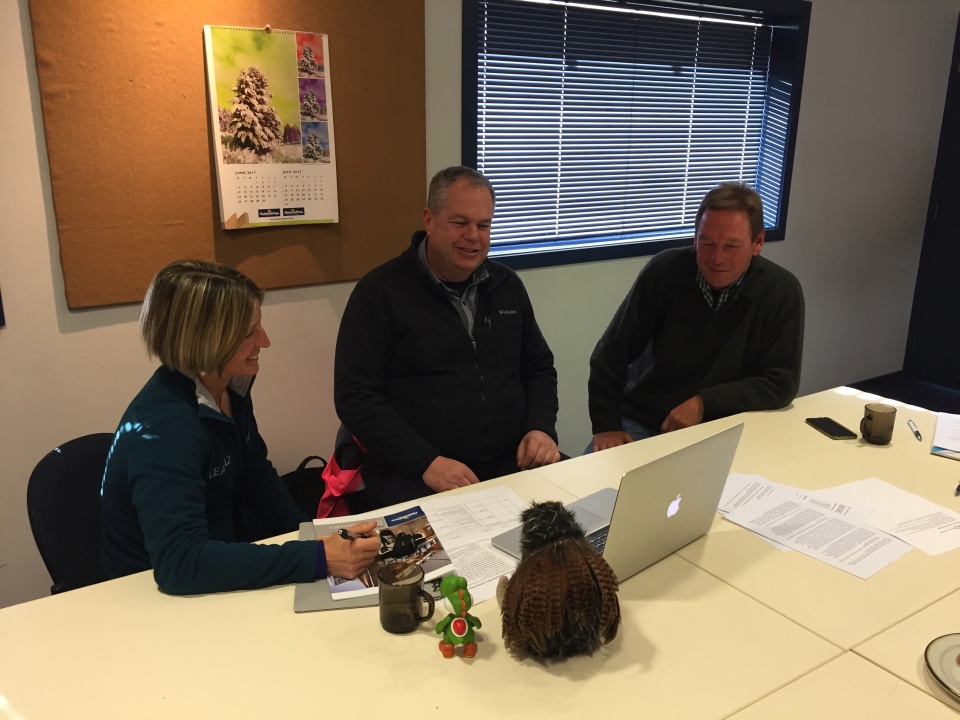
Shelley, Jason and Blair talk to Tauranga Intermediate School during the web conference. Image: LEARNZ.
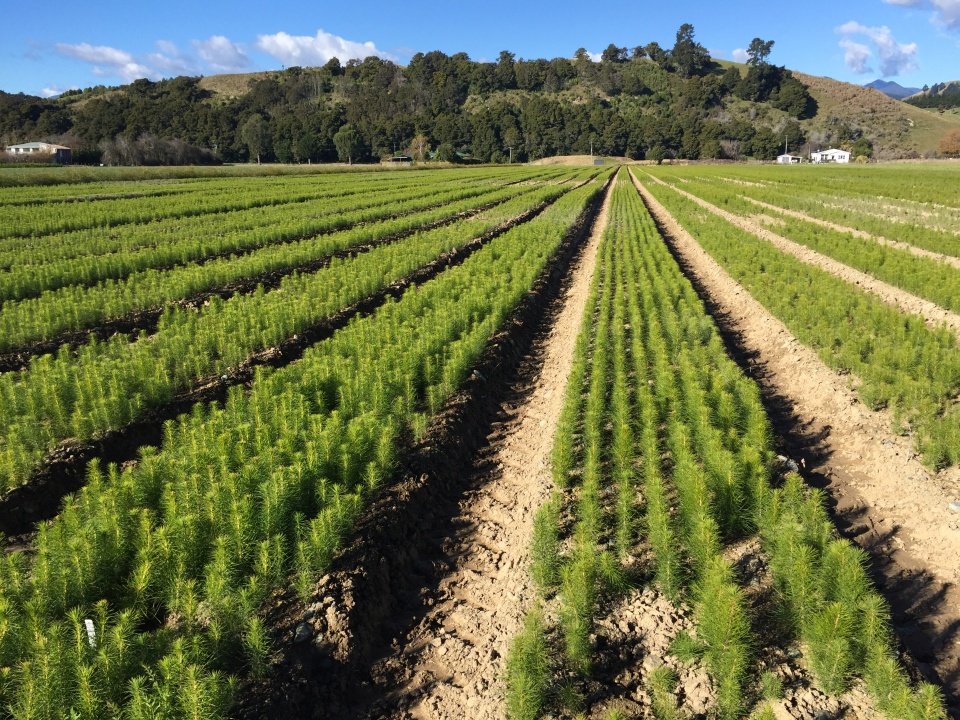
An area of a million pine tree seedlings growing near Nelson. These seedlings are just about ready to be planted out in a forest. Image: LEARNZ.
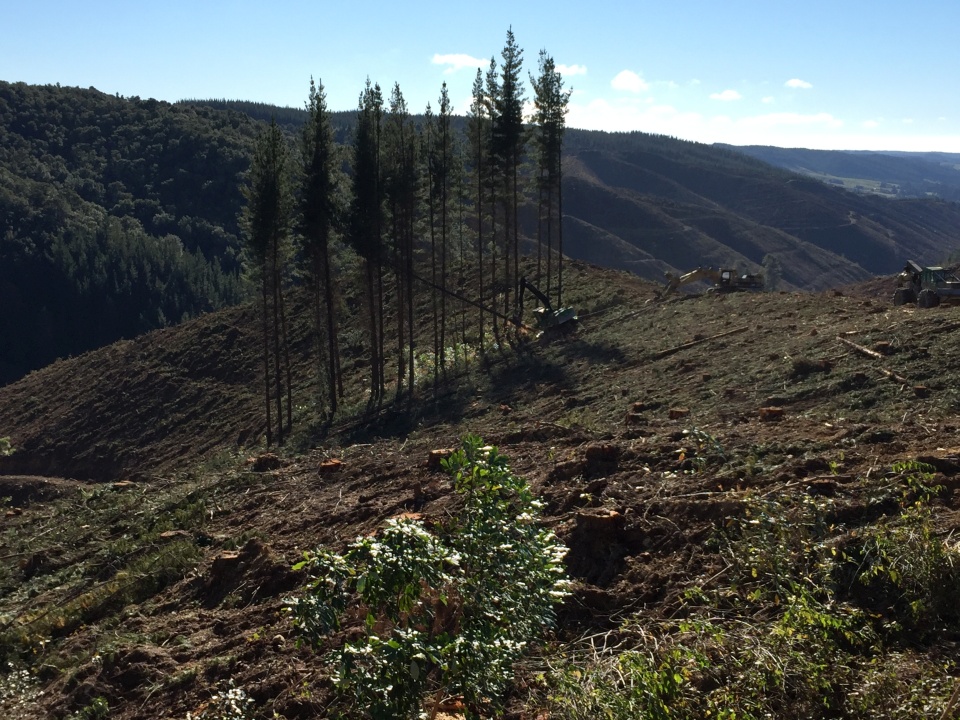
Big machinery makes short work of felling pine trees. How old do you think these trees are? Image: LEARNZ.
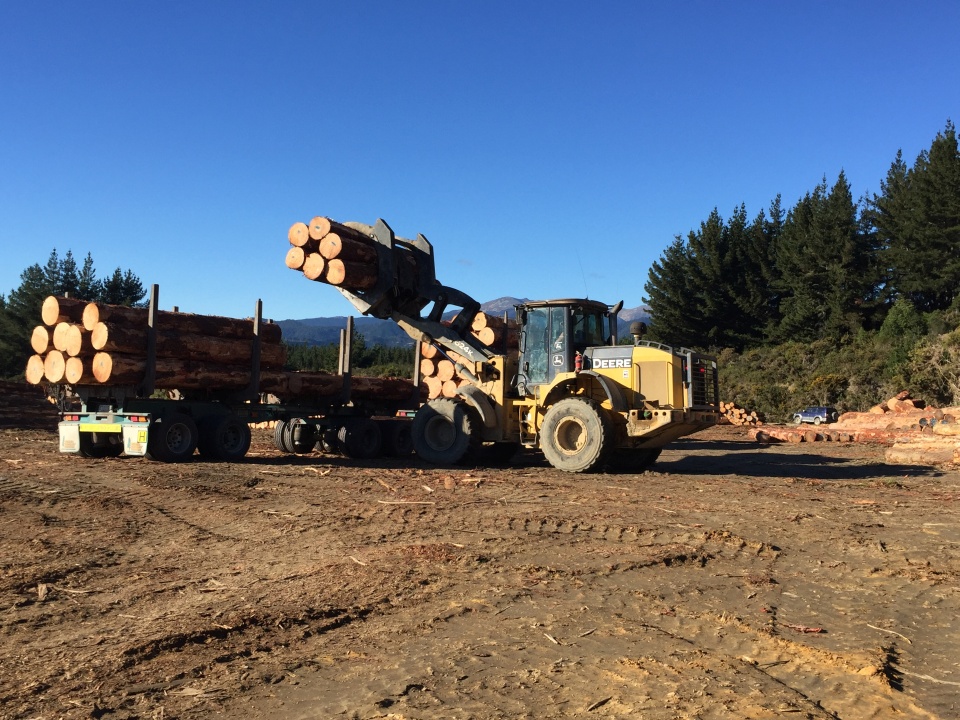
Logs are loaded on to a truck ready to take to Nelson Pine Industries. Image: LEARNZ.
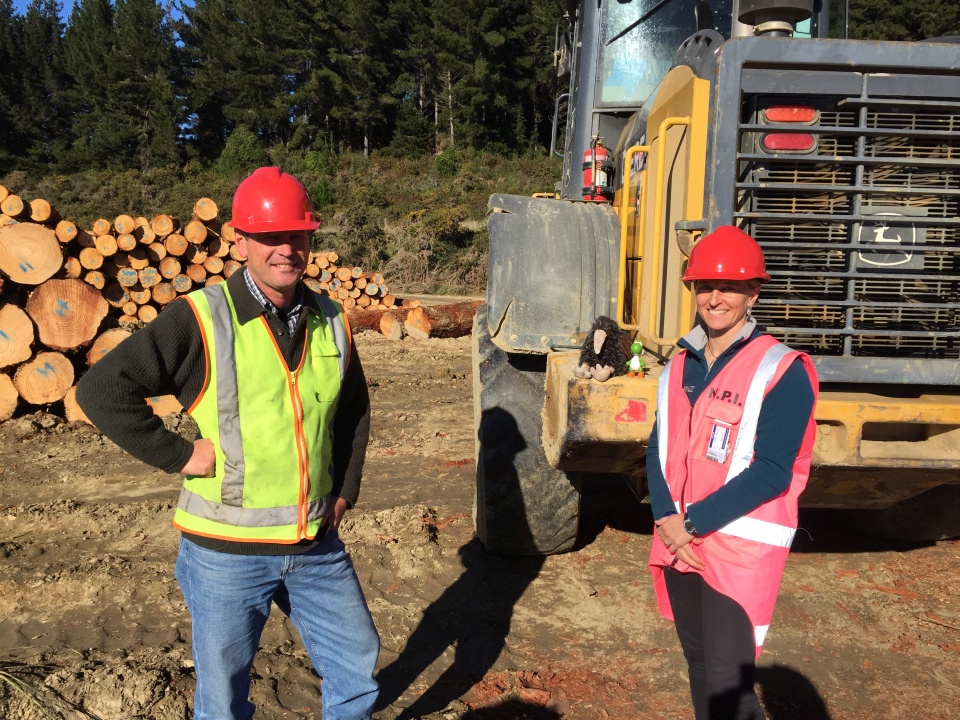
Blair talks to Shelley about how pine trees are looked after to produce the best timber possible. What problems might pine trees have and how are these overcome? Image: LEARNZ.
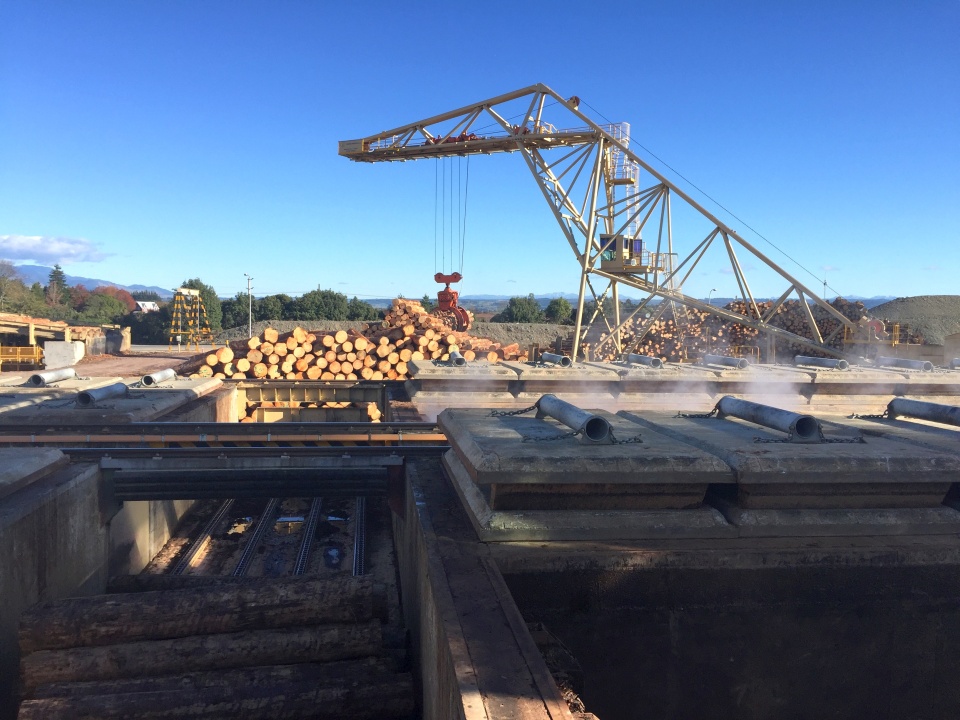
Logs are loaded into hot baths where they will sit for 24 hours so they can be peeled easily. Image: LEARNZ.
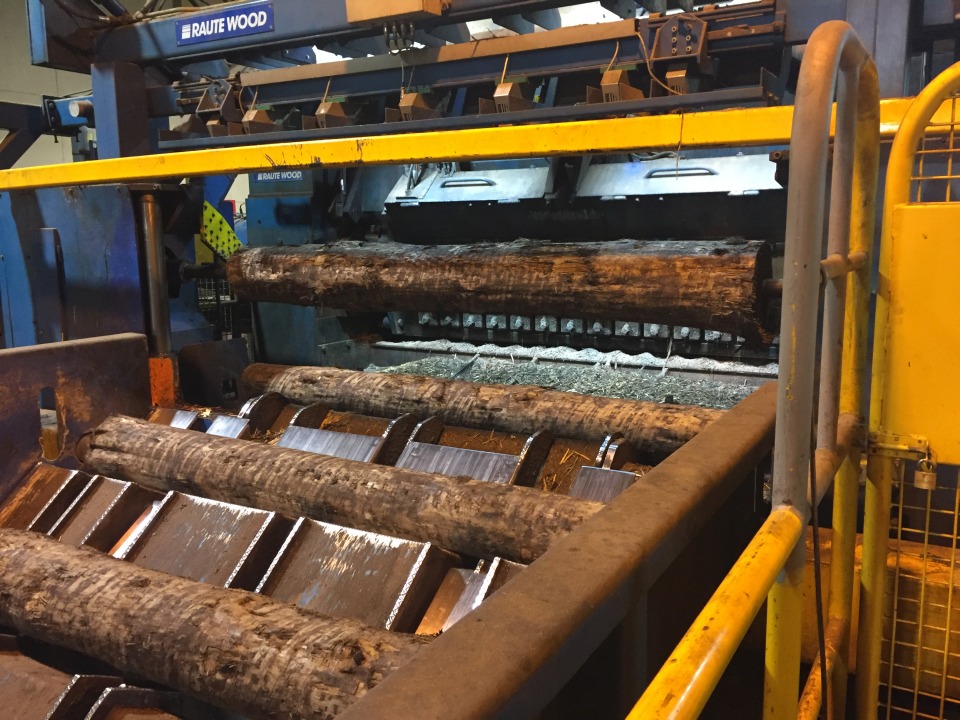
A log is scanned by a laser and positioned so that it can be peeled to create a thin veneer. Image: LEARNZ
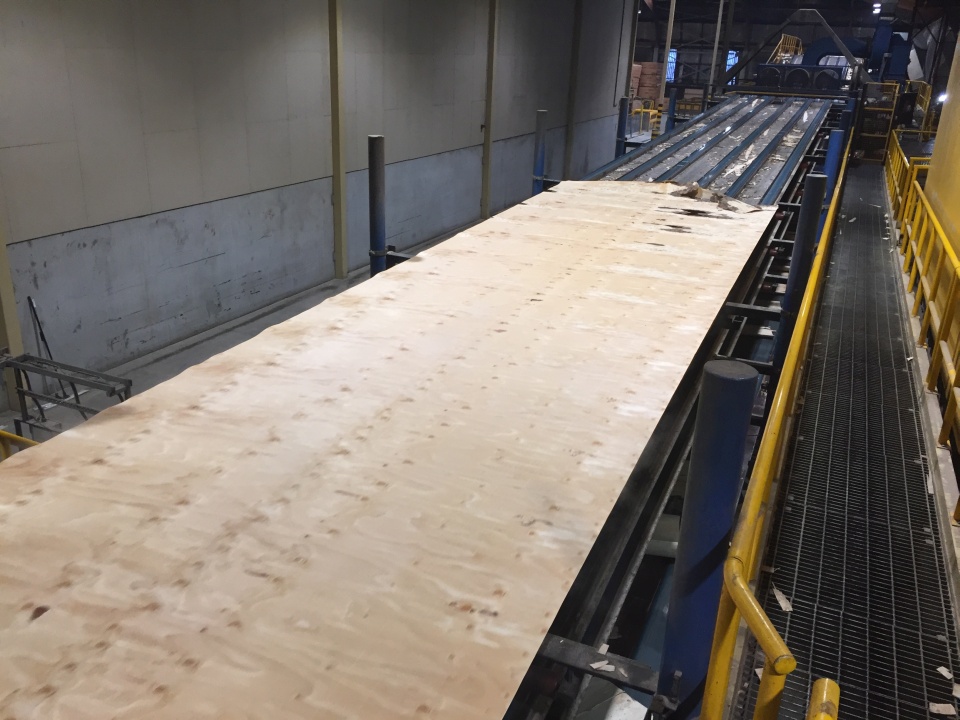
Logs are peeled to create a 3.7mm thick veneer. Image: LEARNZ.
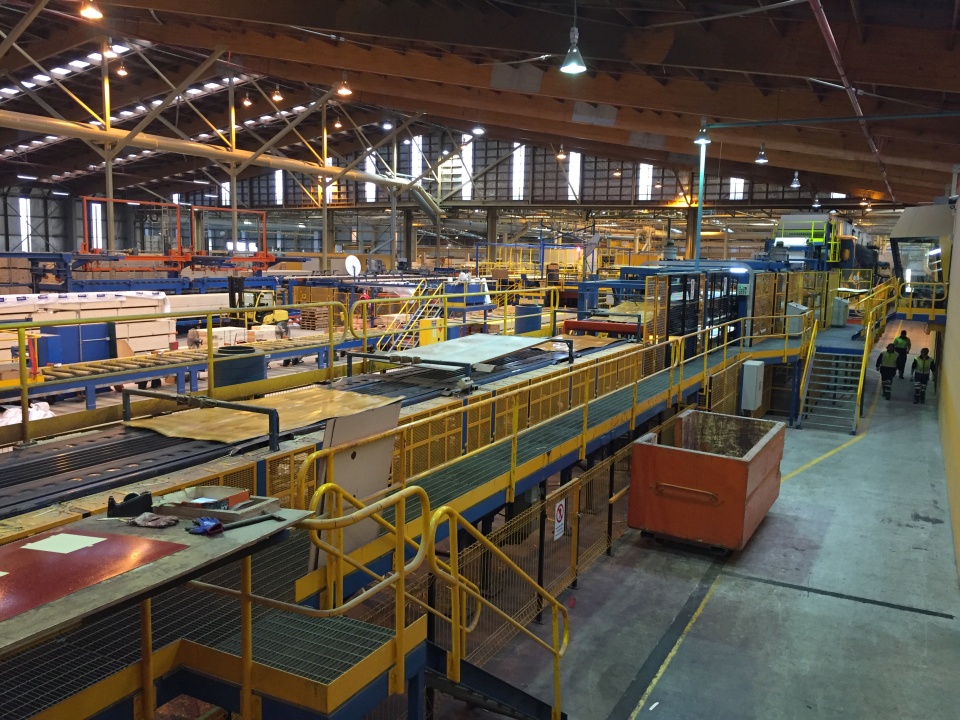
Sheets of veneer have glue applied and are stacked ready to be laminated together under heat and pressure. Image: LEARNZ.
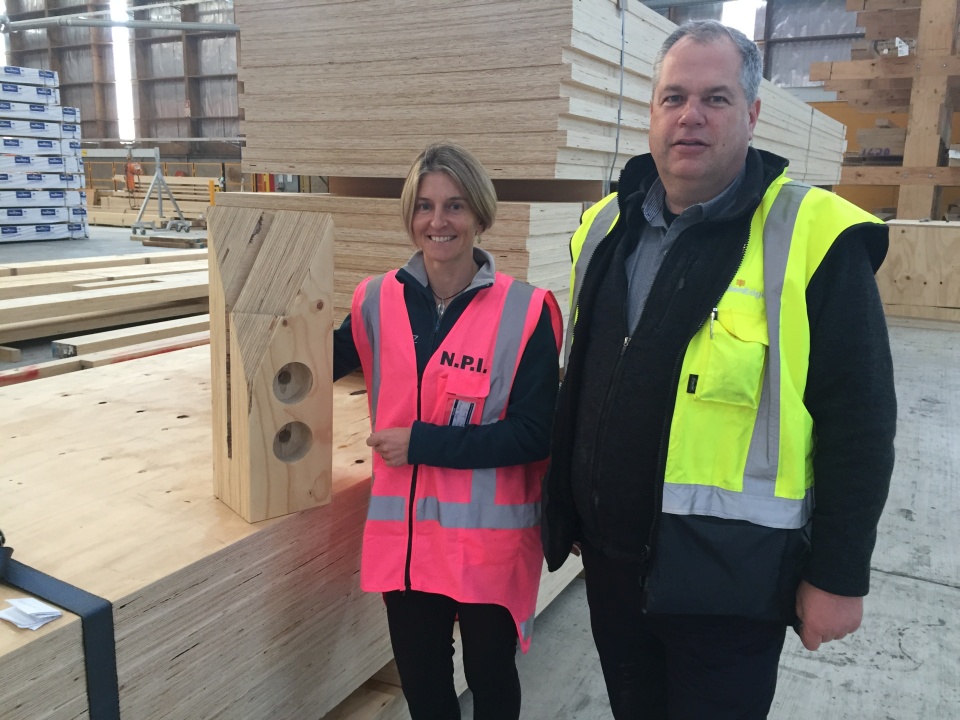
Jason shows Shelley what the finished LVL wood looks like. Image: LEARNZ.